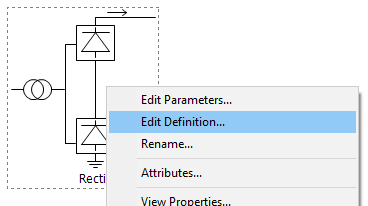
There are several navigational features available to help you efficiently navigate about a project.
Standard vertical and horizontal scroll bars are available in most panes. These are located at the right-most and bottom-most edges of the open window respectively.

You can use the arrow buttons on your keyboard to scroll both horizontally and vertically while on either the schematic or the graphic canvas.
Both the schematic and the graphic canvases may be scrolled using the mouse wheel. To vertically scroll, simply roll the mouse wheel. To scroll horizontally, hold down the Shift key and roll the mouse wheel.
The panning feature allows you to scroll through the schematic or graphic canvases in a fluid motion. You can invoke the panning mode by one of the following methods:
On a blank portion of the page, press and hold the Ctrl and Shift keys at the same time, then click and hold the left mouse button (Ctrl + Shift + left mouse hold). Moving the mouse will then allow panning though the page.
Press the Pan button in the Home (or the Shapes) tab of the ribbon control bar to invoke panning mode. To indicate that you are in panning mode, the mouse pointer will change into a hand shape. Press Esc on the keyboard or press the Pan button again to exit from panning mode.
Opening the schematic canvas of a module component (i.e. moving into) is analogous to editing the definition of the module. Therefore, right-click on the module and select Edit Definition....

You may also perform the same operation by double-clicking the left mouse button. However, this functionality is dependent on a setting called Drill Down (under the Design Environment category of the Application Options dialog) as follows:
Double-Click: If you want to use the old method of navigating through module components, set the Drill Down setting to Double Click. Note however that if the module possesses input parameters, the parameter dialog will not open with this action.
Ctrl + Double-Click: If the Drill Down setting is set to Ctrl + Double Click, you may still navigate into the module by holding down the Ctrl key and left double-clicking the module component. A double-click without the Ctrl button in this mode opens the parameters dialog.
To move out of the current module (i.e. move back one level), press the Up button in the Home tab of the ribbon control bar.
|
|
|
Up Button |
Instead of the Up button, you can also use the workspace secondary window to specifically select a module to navigate to. See The Secondary Window for more.

You can quickly jump around within a project by setting bookmarks on the schematic canvas of any module. Once a bookmark is set, you can navigate to the bookmark from either a list of navigable links in the bookmarks pane, or you may even place a bookmark link component on the schematic. See Adding Bookmarks and Bookmark Links for more details.
Each and every schematic viewing pane possesses its own navigation bar.

The bar displays the hierarchal path, including each navigation level, to the present viewing position (a bread crumb trail). Each level is a navigable link button, which displays the module definition name and instance number. Users may easily traverse up the path with a simple click on any of the buttons:

The navigation bar is set to auto-hide by default. To open it for viewing, simply hold the mouse pointer over the thick, coloured bar along the top of the schematic canvas:

If you would like to lock the bar in it's open state, simply click the lock icon at the far right of the bar.

PSCAD maintains a navigational history of the user’s module canvas navigation for each session. When a project is unloaded, or when a session is ended, all navigation history is lost.
Navigation history is presented in the form of Forward and Back buttons in the Home tab of the ribbon control bar.
![]()
![]()
Tabs allow you to jump from one viewing area to another. There is a tab bar included at the bottom of some windows (as shown below):
![]()
See The Definition Editor for more details.